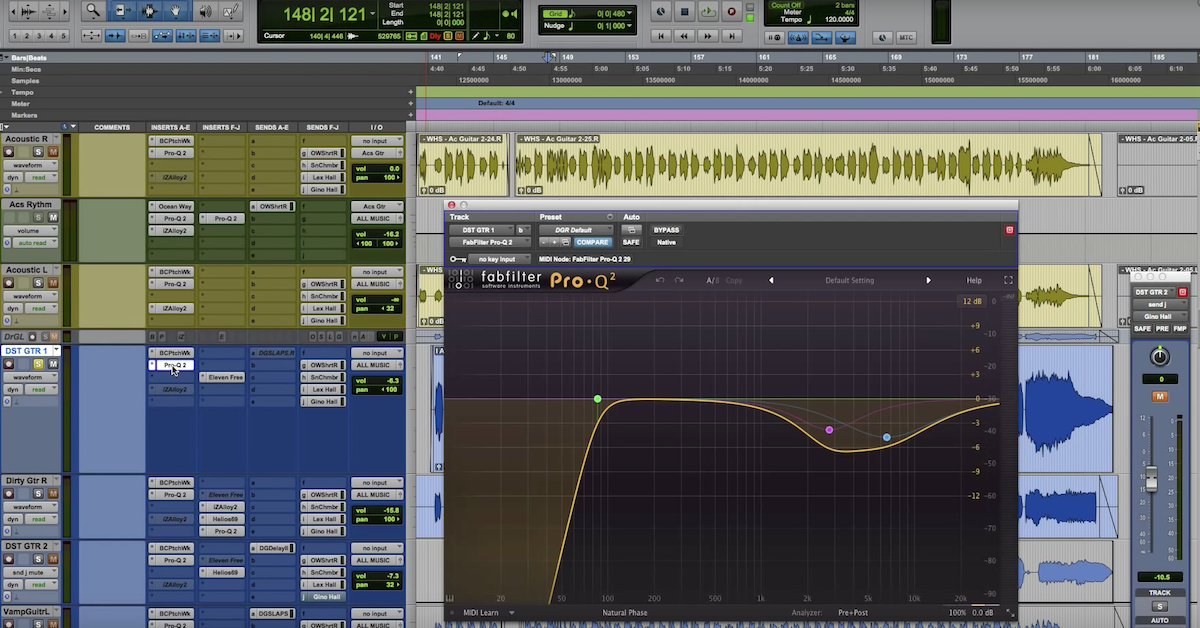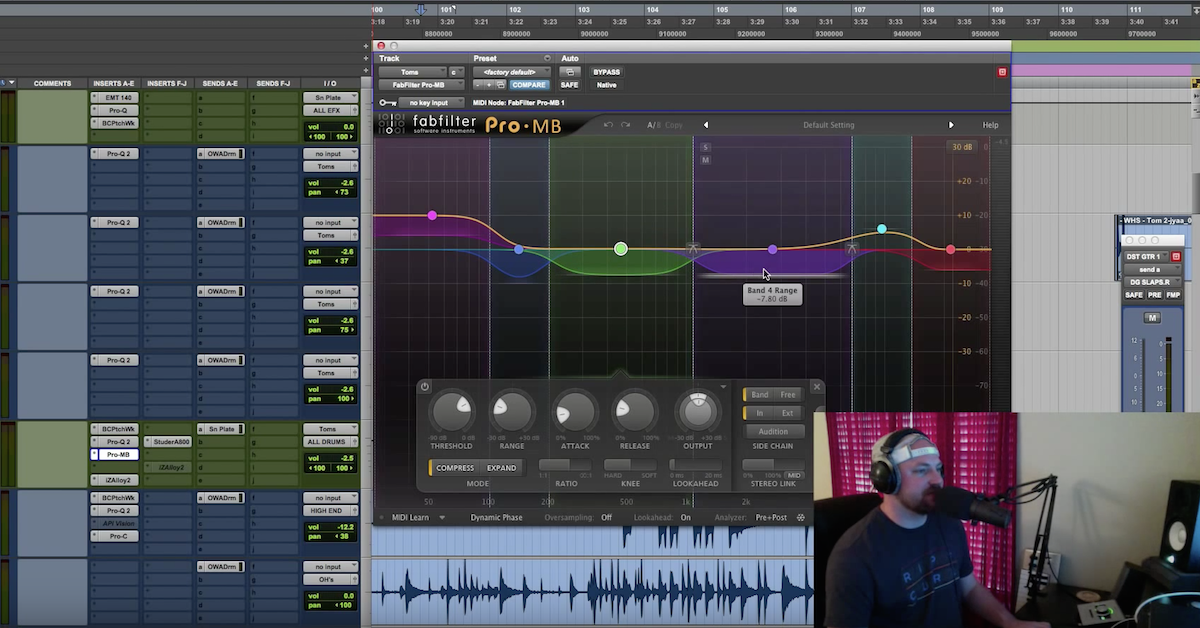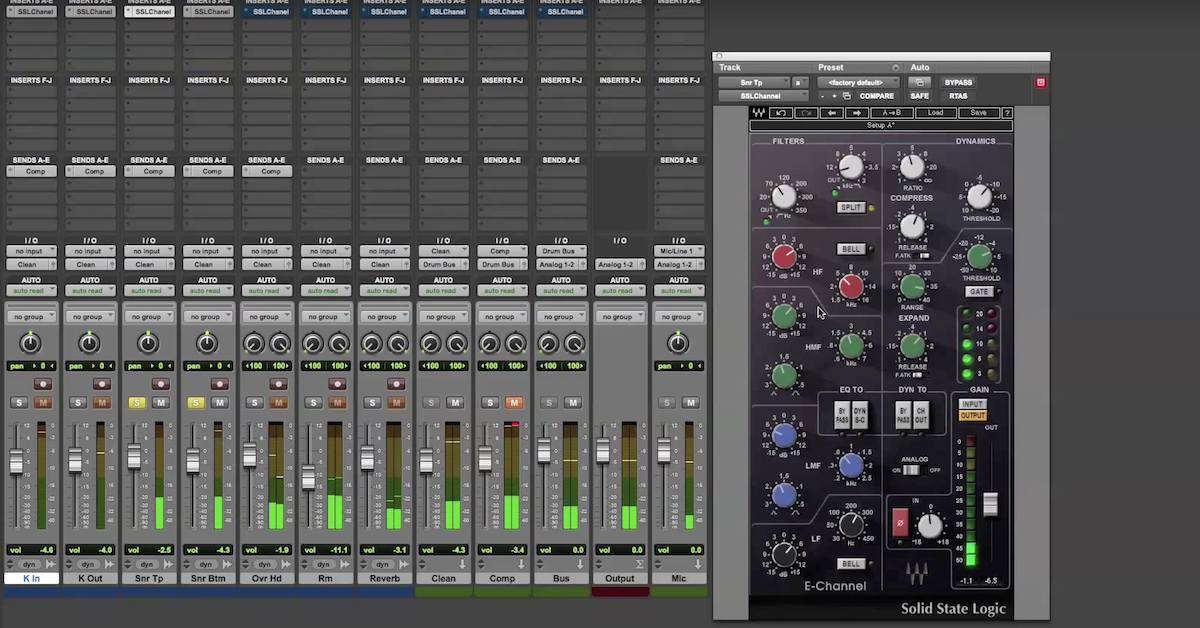Mixing with Mastering in Mind: Tone
Article Content
There are a lot of different ways to conceptualize ‘tone’ when we begin to think about a contemporary recording project. Some of them are powerful, and some of them are pointless. This article points out a few useful techniques for addressing tone during mixing, with mastering in mind.
1. Tone as an Organizational Tool
There are a lot of great articles on this site and others that point out how important it is to organize a mix. Most of these writers point out that it’s musically productive to think in terms of groups of tracks and instruments. Myopic track-level tweaking only finds focus in the creation of these groups.
Figure 1 is an example of a very typical multi-track recording in many rock, pop, and country genres. Thinking about simple musical function, it’s easy to begin to organize this recording into three basic groups: lead or focal content, the elements that support the song rhythmically, and the elements that support the song harmonically.
As pictured in Figures 2 and 3, there are different ways to approach this type of organization, but the goal is always the same. If we can create consistent, meaningful contrasts between these basic instrumental groups, then the tonal character of the mix (and perhaps the whole record) quickly begins to take shape.
As a simple example, take the question, “what is the brightest, most articulate element of the mix?” Consider the different musical results of allowing the rhythmic instruments (pictured in red) to be more or less bright than the harmonic instruments (pictured in blue). Let one of these groups predominate harmonic content above 8kHz or so while the other begins to roll off subtlety in the 5kHz-8kHz range. Perhaps the brightest of the two groups needs a little attenuation in the midrange, around 800 or 900Hz.
Similar coarse tonal contrasts in the low frequencies will help organize a mix with musically meaningful and easily repeatable sonic character. This is a really powerful thing if you’re trying to execute a group of mixes with consistency.
2. The Tools of Tone
EQ is an obvious tool of tone, because it gives us direct control over the harmonic content of our signal. As powerful as EQ is, though, it isn’t always the right choice. Other tools like dynamics processors also change (distort) harmonic content. The key is choosing the right tool, and understanding how to use it toward your tonal goal.
We’ve seen the ‘EQ versus compressor’ question before in the case of sibilant vocal tracks. If we use an EQ to attenuate the offending frequency content, we loose the clarity of the vocal during all of the non-sibilant passages. If there is a time condition in addition to the tonal goal, frequency-focused compression (like de-essing) is probably your smartest tool.
In other cases, you might try thinking in more abstract terms about tone. Engineers like Tchad Blake are expert at creating interest and contrast within a mix by using distortion as a tool of tone. The key is to remember that tools like saturation effects are most effective in terms of how they contrast with the clean, unaffected elements of the mix.
Open up the last mix you did where you thought you had treated the mix buss somewhat aggressively. Instead of processing the whole mix, try applying that treatment to just the rhythmic content (drums and bass buss), or just a subgroup of the vocal content. You’ll probably find that with a little re-balancing the mix is much more interesting and engaging. A distorted mix is just a punch line without a setup.
3. Have a (Simple) Plan
In the same way that organizing your mix is important, organizing a simple plan for how you’re going to execute a group of mixes is also important. This is especially important if you or your client plans to spend money on specialized mastering services. Mastering can go a long way toward pulling a bunch of individual mixes together into a coherent project, but it’s best when the mixes are already vaguely associated.
Some good tonal benchmarks would include:
- What are the basic instrumental groups, and should those vary among the different types of songs included in the project?
- Which elements will predominate below 200Hz, and how much of that content will be presented in the mixes.
- Which elements will be the brightest, most articulate element of the mixes, and do those vary among the different types of songs included in the project.
If all of this strikes you as profoundly simple, then you’re getting the point.
Say what you will about the tenuous status or fate of album projects — they keep rolling into mastering studios all over the world. The records that end up presenting music in compelling, engaging ways tend to include smart choices about how to use tone to organize the arrangements.






